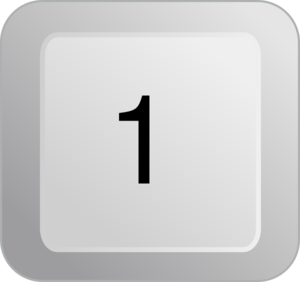

An organ pedalboard is a keyboard with long pedals played by the organist's feet. However, smaller keyboards will typically limit which musical scores can be played.) Organs normally have 61 keys per manual, though some spinet models have 44 or 49.

(Digital systems allow shifting octaves, pitch, and "splitting" ranges dynamically, which, in some cases, reduce the need for dedicated keys. While modern synthesizer keyboards commonly have either 61, 76 or 88 keys, small MIDI controllers are available with 25 keys. Some modern pianos have even more notes (a Bösendorfer 290 "Imperial" has 97 keys, and a Stuart & Sons model has 108 keys ). The lowest pitch (frequency: 27.5 Hz) of an 88-key piano is equivalent to a sub contrabass in the range name. Harpsichords often extended over five octaves (>60 keys) in the 18th century, while most pianos manufactured since about 1870 have 88 keys. The chromatic range (also called compass) of keyboard instruments has tended to increase.
1keyboard for free plus#
The bottom two illustrate the earlier "eight plus four" arrangement

At the top is the earliest example of the "seven plus five" layout. The illustration is from Praetorius' Syntagma Musicum (1619). Keyboards of Nicholas Faber's organ for Halberstadt, built in 1361 and enlarged 1495. The reverse-colored keys on Hammond organs such as the B3, C3 and A100 are latch-style radio buttons for selecting pre-set sounds. Broken keyboards reappeared in 1842 with the harmonium, the split occurring at E4/F4. The break was between middle C and C-sharp, or outside of Iberia between B and C. Such keyboards accommodate melody and contrasting accompaniment without the expense of a second manual, and were a regular feature in Spanish and some English organs of the renaissance and baroque eras.
1keyboard for free registration#
Some 1960s electronic organs used reverse colors or gray sharps or naturals to indicate the lower part (or parts) of a single keyboard divided into two parts, each controlling a different registration or sound.
1keyboard for free portable#
A few electric and electronic instruments from the 1960s and subsequent decades have also done this Vox's electronic organs of the 1960s, Farfisa's FAST portable organs, Hohner's Clavinet L, one version of Korg's Poly-800 synthesizer and Roland's digital harpsichords. Many keyboard instruments dating from before the nineteenth century, such as harpsichords and pipe organs, have a keyboard with the colours of the keys reversed: the white notes are made of ebony and the black notes are covered with softer white bone. The arrangement of longer keys for C major with intervening, shorter keys for the intermediate semitones dates to the 15th century. The pattern repeats at the interval of an octave. Because these keys receive less wear, they are often made of black colored wood and called the black notes or black keys. The keys for the remaining five notes-which are not part of the C major scale-(i.e., C ♯/D ♭, D ♯/E ♭, F ♯/G ♭, G ♯/A ♭, A ♯/B ♭) (see Sharp and Flat) are raised and shorter. Because these keys were traditionally covered in ivory they are often called the white notes or white keys. The longer keys (for the seven "natural" notes of the C major scale: C, D, E, F, G, A, B) jut forward. The twelve notes of the Western musical scale are laid out with the lowest note on the left. Harpsichord with black keys for the C major scale


 0 kommentar(er)
0 kommentar(er)
